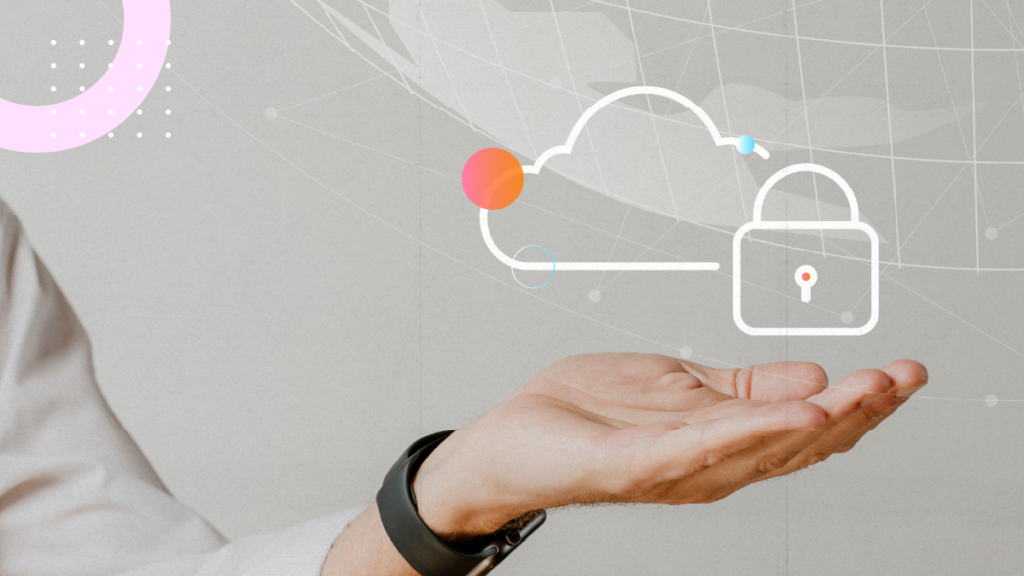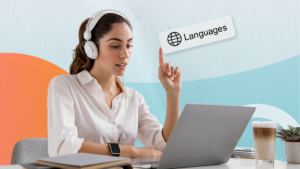Data Security in Translation, a Matter of Trust

Data security in translation may seem a complicated or technical topic. But let’s make it fun and understandable to everyone. Imagine sending an important letter through the post, but instead of sealing it in an envelope, you leave it wide open for anyone to read. That is what happens when translation projects are not handled securely. From legal contracts to financial reports and medical records, companies rely on translation services for sensitive documents every day. However, without the right security measures, this valuable information could fall into the wrong hands.
Data security in translation is much more than just about preventing leaks, it is about safeguarding business integrity, maintaining client trust, and ensuring compliance with data protection laws. Whether you’re a multinational corporation or a small business handling confidential data, taking the right precautions is essential.
Let’s explore the biggest risks in translation security, the best practices for secure translations, and how businesses can keep their sensitive information safe while ensuring high-quality, accurate translations.
Confidentiality in Translations—Safeguarding Information Across Languages
When dealing with translations, security is much more than just a technical issue, it’s a business necessity. Sensitive documents pass through multiple hands: project managers, linguists, and even artificial intelligence translation tools.
Each step presents a potential vulnerability, which can lead to serious consequences:
- Legal & Financial Risks: Leaked contracts, court documents, or financial statements can lead to lawsuits, regulatory fines, or fraud.
- Reputation Damage: If confidential business strategies, patents, or internal communications are exposed, a company’s reputation and competitive advantage can suffer.
- Regulatory Non-Compliance: Data protection laws like GDPR (General Data Protection Regulation) in Europe and HIPAA (Health Insurance Portability and Accountability Act) in the US impose heavy penalties for mishandling sensitive data.
To avoid these risks, businesses must integrate security into every step of their translation process, just like they would when managing customer data, employee records, or financial transactions.
Data security in translation—Common Security Risks and their solution
To protect sensitive information, businesses need to understand the weak spots in the translation process. Here are some of the most common risks:
1. Unsecured File Transfers
Sending confidential documents via email, public cloud storage, or free file-sharing services is like leaving your house key under the doormat, anyone can access it.
Solution: Use encrypted file transfer services, secure virtual data rooms, or private client portals to share documents.
2. Public AI Translation Tools
Yes, free AI translation tools like Google Translate or ChatGPT may seem convenient. They are free, easy to use, and are constantly improving. Yet, if you are not paying with money, may sure not to be paying with data. They often store user data for training purposes. This means confidential business documents could be used to improve the AI model, without your consent.
Solution: Use paid, enterprise-grade AI translation tools that comply with strict data protection policies.
3. Unauthorised Access to Files
Subcontractors, or even internal employees may have unnecessary access to sensitive content. Without the right controls, confidential data could be copied, shared, or misused.
Solution: Implement role-based access control (RBAC), where only authorised personnel can view or edit specific files.
4. Outdated Security Systems
Using outdated software, unsecured servers, or legacy FTP systems makes it easier for hackers to access sensitive data.
Solution: Keep translation management systems and cybersecurity tools up to date, and use secure file transfer protocols (SFTP) instead of traditional FTP.
5. Lack of NDAs and Security Agreements
If your translation provider has not signed a non-disclosure agreement (NDA), there is no legal guarantee that they keep your information confidential.
Solution: Require all translators, agencies, and third-party vendors to sign NDAs before handling sensitive content.
Best Practices for Secure Translations
Now that we’ve identified the risks, let’s look at practical steps businesses can take to protect confidential data throughout the translation process.
1. Encrypt Your Files Before Sharing
Encryption is like putting your documents in a locked safe, only those with the right key can access them. Before sending any file for translation:
- Use password-protected ZIP files for document sharing.
- Enable encryption on cloud storage platforms to protect files from unauthorised access.
- Share passwords separately from the encrypted file via a secure channel.
2. Choose a Secure File Transfer Solution
Think of file transfers as sending a parcel, would you trust a random courier, or would you use a secure, tracked delivery service? The same logic applies to translation projects.
- Use secure cloud storage solutions like Google Drive for Business or Dropbox for Business with access controls.
- Avoid free file-sharing services that lack encryption.
- If using email, encrypt attachments or use secure portals designed for document exchange.
3. Work with Translation Providers Who Prioritise Security
Not all language service providers (LSPs) have the same security standards. Look for:
✔ GDPR-compliant translation workflows: Especially if dealing with EU-based data.
✔ Strict access controls: Ensure translators work in a secure, cloud-based environment without downloading files.
#OptimationalTip: Work with a translation partner that implements security-first practices, including working with NDAs, providing view-only access to documents, and anonymising personally identifiable information before translation.
4. Implement Multifactor Authentication
Even the strongest passwords can be hacked. Multifactor authentication adds an extra layer of security by requiring users to verify their identity with an additional step, like a mobile authentication code.
- Enforce MFA for translators and project managers accessing confidential files.
- Use enterprise-grade translation management systems with built-in security measures.
5. Regular Security Audits and Access Monitoring
Would you leave your office unlocked overnight? Of course not. Similarly, businesses need to monitor who accesses their translation files.
- Conduct regular security audits to identify vulnerabilities.
- Use access logs to track who views, edits, or downloads files.
- Restrict access to sensitive content on a need-to-know basis.
Balancing Security and Efficiency in Translation
Security is essential in translation, but it should not slow down operations. Businesses need to protect sensitive information while keeping workflows smooth and efficient. The right approach ensures security without unnecessary delays.
One way to achieve this is by automating secure workflows within a trusted Translation Management System. A good TMS encrypts data, controls user access, and tracks changes, reducing security risks. Automated workflows speed up the process while keeping documents protected. Less manual handling also means fewer chances for errors or data leaks.
Using on-premise AI translation tools is another smart move. Free, cloud-based AI translators store user input, which can expose sensitive information. On-premise solutions keep translations secure within a company’s internal network. This ensures data protection and compliance with regulations like GDPR and HIPAA.
Here comes AI—Its Rising Role in Translation and Its Security Implications
Data security in translation faces even more vulnerability when joint with AI. AI has transformed the translation industry, making it faster and more accessible. Neural machine translation (NMT) models, such as Google Translate, DeepL, and OpenAI’s ChatGPT, have significantly improved accuracy and efficiency. However, these tools also raise concerns about data privacy, ownership, and confidentiality in translations.
How AI-Powered Translation Works
AI-driven translation tools use large language models (LLMs) that are trained on vast datasets to predict and generate text in different languages. When users input text into a free AI translation tool, the system analyses patterns and provides a translation based on previously learned data.
The key concern is data retention and reuse. Some AI translation tools store, process, or even repurpose user-provided text for model training. This means sensitive business documents entered into a public AI translator could be stored indefinitely, accessed by third parties, or even used to improve future translations, a major security risk.
Potential Risks of AI in Translation Workflows
While AI enhances productivity, businesses must be aware of its potential security vulnerabilities:
- Data Storage & Retention: Many AI translation tools store user input, making sensitive information accessible beyond its intended use.
- Lack of Encryption: Free AI services often do not encrypt data during processing, making it vulnerable to cyber threats.
- Third-Party Access: Some AI providers share data with external parties or use it to train future models, leading to confidentiality breaches.
- Regulatory Non-Compliance: AI-powered translation tools may violate GDPR, HIPAA, or other data protection laws if they process personally identifiable information (PII) without explicit consent.
- Accuracy vs. Security Trade-Off: While AI provides quick translations, it may overlook contextual nuances, especially in legal or financial documents, potentially leading to misinterpretations and legal risks.
Data Security in Translation: Protecting Intellectual Property and Business Assets
Beyond translation, AI plays a growing role in document processing, content creation, and knowledge management. Businesses use AI to generate reports, automate workflows, and streamline multilingual communication. However, without proper safeguards, AI-powered documentation tools can expose companies to data breaches, intellectual property theft, and unauthorised access.
Key Security Measures for AI-Processed Documentation
- Use AI models that do not retain customer data: Ensure that AI services do not store, repurpose, or sell your data to third parties.
- Control data access: Just like translation workflows, limit who can view, edit, or export AI-generated documents.
- Encrypt AI-generated files: Store files in secure, encrypted environments to prevent unauthorised access.
- Monitor AI interactions: Keep track of who inputs data into AI systems and how it’s being used.
A real-world example? Many businesses are integrating AI-driven documentation tools with Microsoft Azure, which ensures that AI models do not store customer input data, keeping translations and AI-generated reports confidential while leveraging technology to their advantage.
AI, The Double-Edged Sword of Innovation and Risk
In translation, AI has transformed the way businesses communicate across languages. It speeds up workflows, reduces costs, and improves accessibility. But beneath these advantages lies a major concern: data security and ownership.
AI translation tools don’t just process words; they collect, store, and analyse vast amounts of information. This raises serious questions about who controls the data, how it’s used, and whether businesses are unknowingly exposing confidential information.
The Risks of AI in Translation and Documentation
Many free AI translation tools come with an invisible price tag: your data. These platforms often retain user input to train their models, meaning sensitive business documents could become part of an AI’s learning process. Once that happens, ownership becomes murky, and businesses risk losing control over their proprietary information.
There’s also the issue of accuracy and reliability. AI struggles with context, nuance, and industry-specific terminology, making it risky for fields like law, medicine, and finance, where even a minor translation error could lead to legal disputes, misdiagnoses, or financial losses. Blindly trusting AI without human oversight can be a costly mistake.
How to Use AI Responsibly Considering Data Security in Translation
AI is not the enemy, nor the hero, it is a tool. Like any technology, its impact depends on how we use it. The key is balancing AI’s efficiency with strong security measures and human expertise.
Businesses should opt for enterprise-grade AI translation providers that offer strict data protection policies. On-premise AI models allow companies to benefit from automation while keeping sensitive information within their secure infrastructure. Most importantly, human translators should always be involved. AI should assist, not replace them.
Technology is Only as Good as How We Use It
As the Spanish philosopher Paul Virilio famously said, “When you invent the ship, you also invent the shipwreck.” Every technological advancement brings both progress and potential pitfalls. Technology can enhance productivity, cut costs, and improve global communication, but if misused, it can also expose businesses to data breaches, security threats, and ethical concerns.
The solution? Use it wisely. Protect your data. And, most importantly, work with vendors who prioritise security, transparency, and compliance.
Need a secure translation partner? Contact us today to discuss how we can help you translate with confidence, without compromising data security. 🚀


